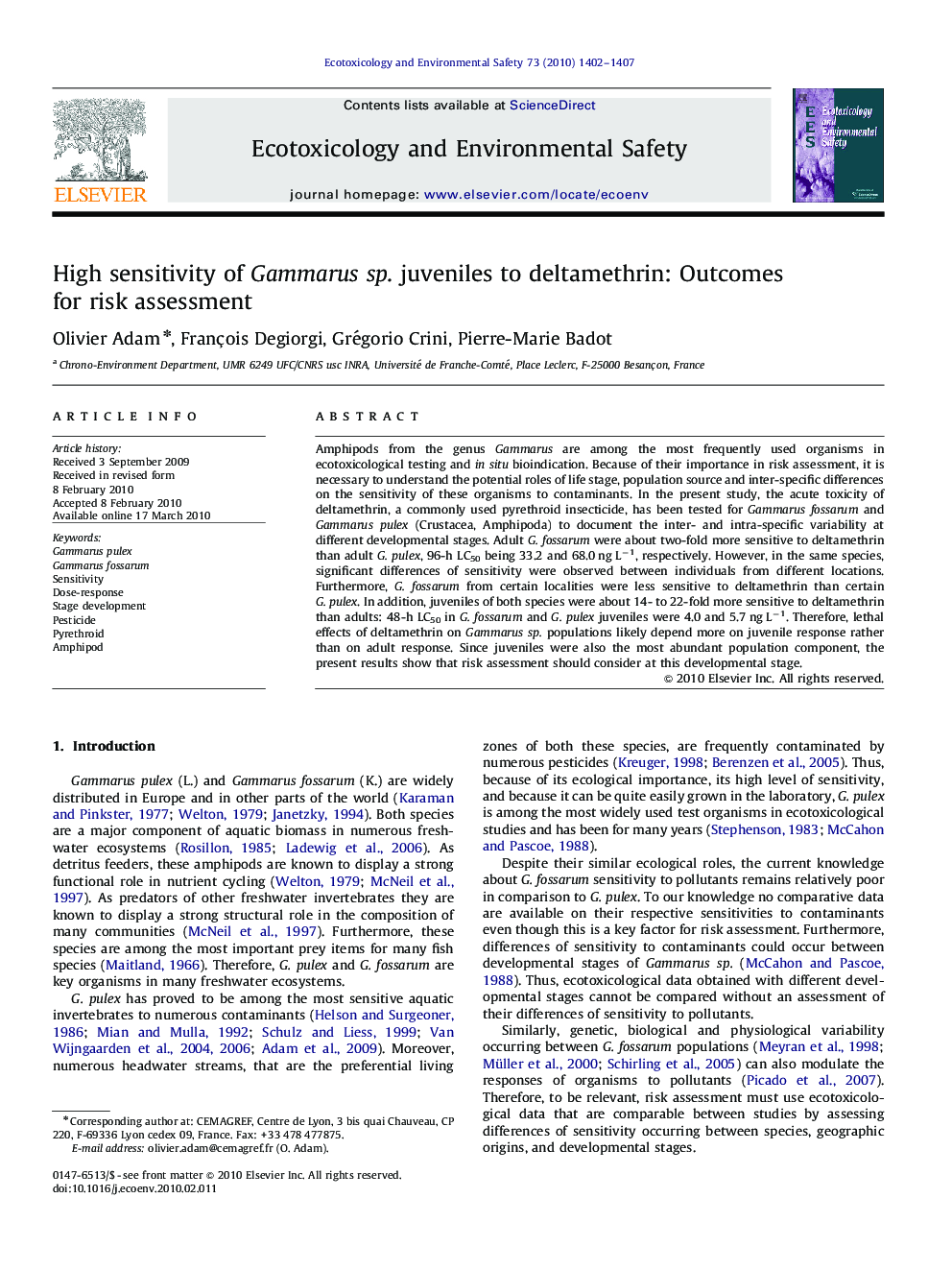| Article ID | Journal | Published Year | Pages | File Type |
|---|---|---|---|---|
| 4421166 | Ecotoxicology and Environmental Safety | 2010 | 6 Pages |
Amphipods from the genus Gammarus are among the most frequently used organisms in ecotoxicological testing and in situ bioindication. Because of their importance in risk assessment, it is necessary to understand the potential roles of life stage, population source and inter-specific differences on the sensitivity of these organisms to contaminants. In the present study, the acute toxicity of deltamethrin, a commonly used pyrethroid insecticide, has been tested for Gammarus fossarum and Gammarus pulex (Crustacea, Amphipoda) to document the inter- and intra-specific variability at different developmental stages. Adult G. fossarum were about two-fold more sensitive to deltamethrin than adult G. pulex, 96-h LC50 being 33.2 and 68.0 ng L−1, respectively. However, in the same species, significant differences of sensitivity were observed between individuals from different locations. Furthermore, G. fossarum from certain localities were less sensitive to deltamethrin than certain G. pulex. In addition, juveniles of both species were about 14- to 22-fold more sensitive to deltamethrin than adults: 48-h LC50 in G. fossarum and G. pulex juveniles were 4.0 and 5.7 ng L−1. Therefore, lethal effects of deltamethrin on Gammarus sp. populations likely depend more on juvenile response rather than on adult response. Since juveniles were also the most abundant population component, the present results show that risk assessment should consider at this developmental stage.
